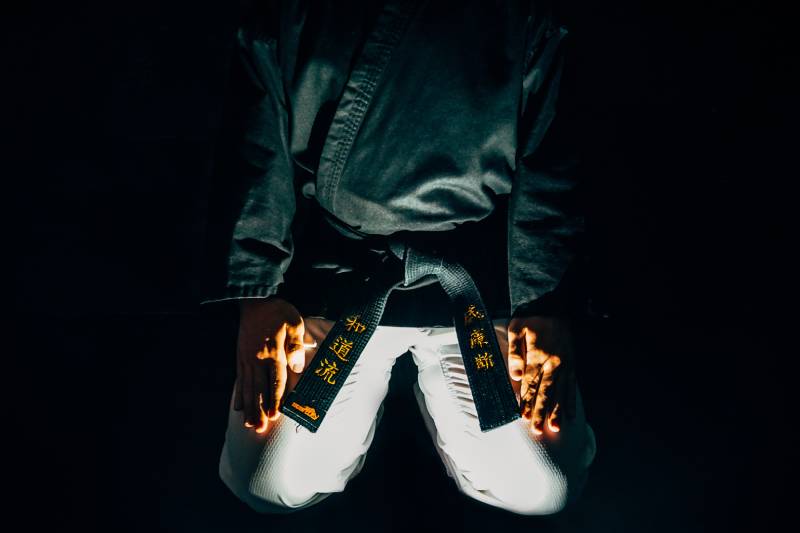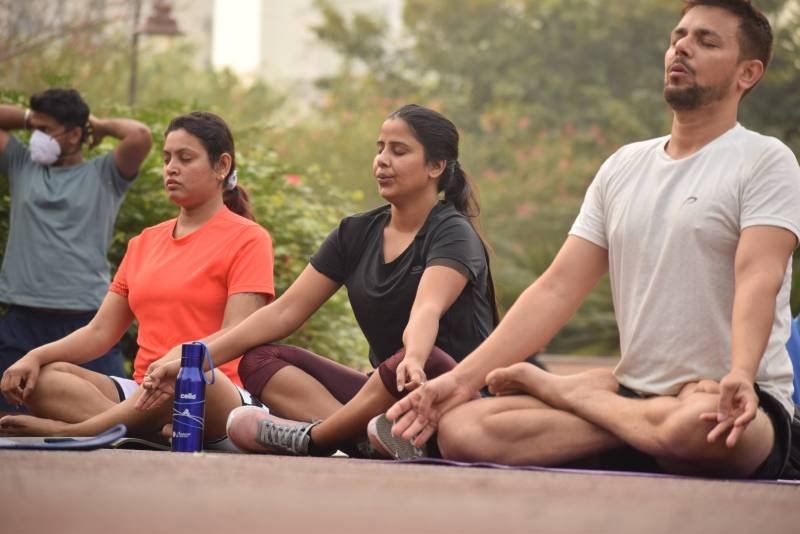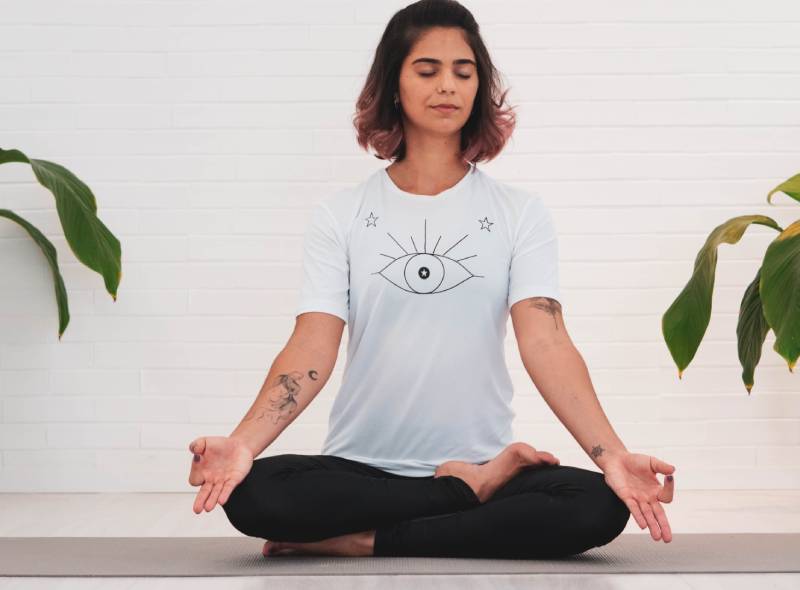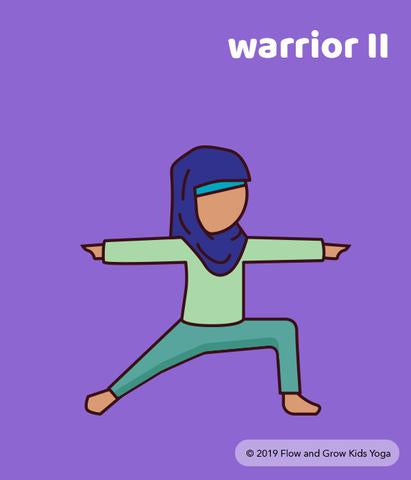Centering Meditation: The Meditation That Will Help You Find Inner Stillness
The post Centering Meditation: The Meditation That Will Help You Find Inner Stillness appeared first on The Yoga Nomads.

In this day and age, mental health concerns are on the rise. In a recent UK survey by YouGov, 74% of participants stated that in the last year, they had felt so stressed that they had been overwhelmed or unable to cope. What’s more, common mental disorders like anxiety, depression, and panic attacks increased by a staggering 25% during the first year of the COVID-19 pandemic.
Therefore, it’s no secret that there are overwhelming needs to know how to decrease stress and cultivate calm in our lives. Meditation is a widely known practice that more and more people are using to improve their mental health.
Centering meditation is one of the many techniques that has been scientifically proven to relieve symptoms of stress and anxiety while increasing the trait mindfulness. But what is centering, and why is it such an essential meditation technique? Read on to find out.
What is centering in meditation?
Centering is a vital aspect of both meditation practice and spiritual life. Centering helps you focus on the here and now, allowing you to connect to your inner self. By taking time to ground yourself before meditation or yoga, you withdraw your attention from the external world and the negative thoughts and emotions that come with it. This makes it easier to remain stable and grounded throughout your meditation practice.
There are various centering techniques used in meditation, which we will explain in more detail below. Centering meditation can include silently repeating a mantra or word (similar to Transcendental meditation), a body scan where you move your awareness around the body, or visualization.
While the techniques may differ, the aim is to bring stillness to mind and connect with the present moment. Feeling centered is just one of the many benefits of meditation, so opting for a centering practice will focus predominantly on this quality.
Centering meditation is ideal for people with overactive minds and those who struggle to connect to or focus on the present moment. The practice of centering will train your mind to become more present and aware, cultivating a more profound sense of calm and peace.
Centering in other spiritual practices

Centering is not just a meditation technique; it is also used in many other spiritual practices, such as the Japanese defensive martial art, Aikido. Aikido trains your mind to control your reactions by connecting with and working with your “Qi” (life force).
It is believed that Qi holds all our physical and mental energy. The better this life force can flow around your body, the more power you have. However, vital energy is lost when Qi is stagnated or blocked, reducing our ability to control our reactions.
Stress and tension are two of the leading causes of blocked Qi. Still, the practice of centering can increase the flow by redirecting negative energy away from the body.
Centering is also the foundation of energy work and, thus, is done at the beginning of Qi gong, Tai Chi, or similar practices. Moreover, the facilitator of an energy work practice will often take time to center themselves before beginning the class.
Centering is equally as popular in many styles of yoga practice, where classes begin with a short centering meditation. Along with helping to quiet the mind, centering at the beginning of a yoga session allows the chance to set an intention for your practice, giving the session a specific focus.
Scientific research on centering meditation treatment

Although much scientific evidence proves the benefits of meditation in general, a 2021 clinical trial measured the effects of practicing centering meditation specifically, every day for 4 weeks.
The college student wellness study, carried out by Stephanie Dorais and Daniel Gutierrez, was registered on the international clinical registry platform. It used a unique online centering meditation intervention on two groups of college students seeking counseling services due to high levels of college stress.
In this randomized controlled trial, a meditation group of 150 participants engaged in a 4-week intervention involving centering meditation for 10 minutes every morning and every night.
Researchers measured stress levels in both groups through the Perceived Stress Scale. In addition, they used the Cognitive and Affective Mindfulness Scale-Revised to measure mindfulness. These tests were carried out three times during the study; at the beginning, the halfway point, and the end.
The study findings show that centering meditation effectively relieves college student anxiety and improves overall college student well-being. In addition, the result of this study has given university and college counselors at other educational institutions a proven way to treat students to treat college stress and anxiety.
Of course, this doesn’t mean centering meditation is only beneficial for students or young people. The findings show that centering meditation can effectively relieve stress in anyone, regardless of age.
What is the cognitive and affective mindfulness scale?
The cognitive and affective mindfulness scale (CAMS-R) is a 12-item scientific measure designed to measure levels of mindfulness, distress, well-being, emotion-regulation, and problem-solving in study participants. The scale, developed in 2007, consists of a self-report with questions written in everyday language and not specific to any particular type of meditation training.
What is the perceived stress scale?
The Perceived Stress Scale (PSS) is the most widely used psychological tool for measuring stress levels. The 14-item self-report measures how stressful participants find certain situations in their lives. This gives researchers an idea of a participant’s stress levels by seeing their level of perception of stress.
How to center your mind
As we already mentioned, there is more than one way to center your mind. Here are three popular centering techniques; we recommend you try them all to determine which one is most beneficial for you.
Centering prayer

The centering prayer technique is a Christian meditation method involving the silent repetition of a sacred word or symbol. It is similar to transcendental meditation, but aside from the religious differences, TM involves silently chanting a mantra that your teacher gives you. In centering prayer, you choose a sacred word that resonates with you.
Centering prayer is a technique the college students used in the clinical trial described above. Here is how to do it.
Choose a word or symbol that feels grounding and calming to you. While in Christianity, meditators may choose the word god or another holy phrase, you can adapt the practice if you are not religious. In this case, you can choose a quality you seek more of, like hope, joy, or inner peace. Whatever you choose, the word should represent your intention to connect with what spirituality or higher power means to you.Find a comfortable seated position free from distractions, set a timer for 10 minutes, and close your eyes.Begin silently repeating your chosen word over and over again. After a while, you will likely notice thoughts entering your mind, drawing your attention away from your mantra. When this happens, simply see that you are becoming distracted and gently redirect your attention back to your mantra. Do this as many times as necessary until your timer goes off.Let go of your mantra and spend a few moments in stillness and silence. If you like, you can also say a prayer to end the practice. Alternatively, you can chant a sacred phrase or word like Om.Visualization

Visualization is an effective way to cultivate focus and calm a busy mind. In this visualization, bring your awareness to your “physical center of gravity, ” about two inches below your navel. Spend a few moments here, visualizing your body grounding down into the earth.
Note that this first part can be done anytime in your daily life when you feel stressed, anxious, or unbalanced. Simply place your hand on this point, close your eyes, and take five deep, conscious breaths.
Continuing the meditation, imagine a glowing ball of energy in your center. Take a few moments to focus on this vision, then imagine yourself filling the ball with any opposing thoughts or emotions you are experiencing. Once the ball is full of negativity, imagine you throw it far off into the distance, taking all the unwanted feelings with it.
Alternatively, you can imagine a balloon at your center. The balloon starts small, and as you fill it, it gets bigger and bigger until it cannot expand anymore. Then, envision the balloon floating past your head towards the universe until you can no longer see it.
Body scan

A body scan is a mindfulness technique that helps to take you out of your busy mind and bring you into your body. A body scan involves moving your attention one body part at a time around your body.
You can do a body scan as a standalone centering practice whenever you need to cultivate more presence. Or you can do it at the beginning of a meditation practice before using one of the above techniques.
In a reclined position, start with the top of your head, taking a moment to feel the weight and sensation of this body part. Then move down to your neck, doing the same thing. Continue with your shoulders, upper arms, lower arms, hands, and fingers.
Next, move to your back, feeling into the upper back, mid back, and lower back before arriving at the hips. Continue south to the pelvis, groin, thighs, knees, calves, ankles, feet, and toes.
To end the body scan, spend a few moments feeling the sensation of your whole body at once.
Breath awareness

Like the body scan, the breath awareness technique can be used on its own or at the beginning of extended meditation. You can do this technique seated, but we recommend doing it laying down, as it is easier to connect to the movement of the breath in a reclined position.
Place one hand on your heart center and the other hand on your belly. As you inhale, feel your belly expand like a balloon filling up. As you exhale, feel your belly contract like a balloon deflating. Your chest should have minimal movement as you focus on this deep belly breathing. Continue this diaphragmatic breathing for at least 10 breaths.
Then, start to direct your breathing into your heart center. As you inhale, feel the chest rise and press gently against your hand. As you exhale, feel the chest fall and relax. During this part, there should be minimal movement in the abdomen. Breathe into the heart center for a minimum of 10 breaths.
Lastly, keeping your hands in the same position, breathe one breath into your abdomen, then take the next breath into your heart. Alternate like this for at least 10 breaths, belly, chest, belly, chest, etc. Remember, you should feel the body part rising on the inhale and falling on the exhale.
The last section of this breath awareness meditation engages your mind further, bringing a more profound sense of calm and stillness.
Why is centering meditation intervention so effective?

So what about centering meditation makes it so effective at decreasing stress?
Out of the many types of meditation, there are three broad categories they can fit into; devotional, focused, or mindfulness. Centering prayer meditation (the style used in the study mentioned in this article) is believed to be beneficial as it is both devotional and focused.
The devotional aspect comes from its spiritual roots and the use of silently chanting a sacred word or mantra. This makes it different from western-style mindfulness meditation practices like Mindfulness-based cognitive therapy (MBCT) and Mindfulness-Based Stress Reduction (MBSR).
Of course, this is not to say that using the other centering techniques described above will not be as effective. All the centering techniques and meditation styles reduce stress and improve well-being.
What’s more, centering yourself does not just improve your meditation experience; it helps you stay more mindful and present in daily life. This, in turn, affects the way you react to stressors.
Whenever you center yourself, you become less attached to the external situation and more connected to your inner being. By learning how to center yourself through meditation, you can apply the technique whenever stressful situations arise in daily life.
For example, suppose you are stuck in traffic and feel the familiar sensation of stress arriving. In that case, you have the choice to take a moment and center yourself. Taking just 10 deep and full breaths, or spending 1 minute focusing on the center of your body, may be enough to change your reaction to the stressor.
Tips for a successful centering meditation

If you’re an experienced meditator, these centering techniques will seem relatively familiar to you. However, if you’re new to meditation, you might feel overwhelmed or struggle to settle your mind.
The tips below will help you best prepare for your centering meditation practice and provide guidance for the experience itself.
Release any excess energy beforehand
When we come to meditate, our minds and bodies can sometimes feel too active, making it difficult to get out of our heads. If this is the case for you, I recommend doing a short movement practice beforehand to release any excess energy.
In yogic philosophy, the eight limbs of yoga suggest that you practice asana (yoga postures) before breathing techniques or meditation. As yoga is a mindful movement practice, doing a few yoga poses can help bring you into a more meditative state.
You don’t have to roll out a yoga mat to do this, as there are many simple poses you can do sitting on a chair or on a cushion on the floor. For example, you can create circular movements with your spine, do a seated cat-cow, a seated twist, or a seated side bend.
Try a yogic breathing technique
Along with the breath awareness centering technique described above, many yoga pranayamas (breathing techniques) will help you prepare further for meditation. Along with asana, yogic teachings recommend you do pranayama before meditation.
Note that some pranayamas are calming and relaxing, while others are energizing. Choose a calming breathing technique like Nadi Shodhana (alternate nostril breathing) for centering meditation.
Check your posture
If you are meditating in a seated position, ensure your spine is straight and that you are not slouching forwards or leaning back. A straight spine with shoulders aligned over your sitting bones is vital for maximizing the flow of Qi (life force) throughout the body, which increases your mental focus and stillness.
There are a few ways to find the correct posture for meditation. Elevating your hips by sitting on a pillow or cushion may be enough for you. Alternatively, you might find that aligning your back against the wall is a helpful prompt for sitting up straight.
Moreover, many prefer sitting on a chair instead of on the ground. Sitting on a chair is a good choice for cultivating a sense of groundedness. You can press your feet firmly into the floor and focus on your body’s connection to the earth.
Remember that it’s okay to do these centering meditations laying down too. This is recommended if you have a lot of muscular tension or are dealing with injuries related to the back, hips, or knee joints.
Follow a guided meditation
If you are new to meditation, I recommend following a guided centering meditation. You will find many meditations that involve centering on Youtube or meditation apps. For example, this 20-Minute Silva Centering Exercise with Vishen Lakhiani is ideal for beginners. Or, this super short 3-minute Guided Centering Meditation is perfect for those times during the day when you need to refocus your mind.
Allow emotions to come up
As we spend most of our day rushing around, bringing our minds and bodies into stillness can sometimes bring up emotions we have been repressing or ignoring. Thus, if you notice an uncomfortable feeling arise during your meditation, know this is okay.
Avoid the temptation to push it away and instead invite it in. Emotions, like thoughts, are fleeting, meaning they come and go. Although it may feel uncomfortable, when you sit with the feeling, you cause it to lose its power, and it will eventually subside.
Learning to sit with your emotions is a critical lesson in mindfulness. The more comfortable you become doing it, the more control of your feelings you gain.
Final thoughts on centering meditation
The timeless healing technique of centering is found in many religions and spiritual practices, from Christianity to martial arts. Centering can enhance your meditation practice and personal and spiritual life by decreasing stress and anxiety and cultivating presence and focus.
So if you’re looking for a genuinely effective stress relief practice, give one of these centering meditations a go!

 JaneWalter
JaneWalter 
































